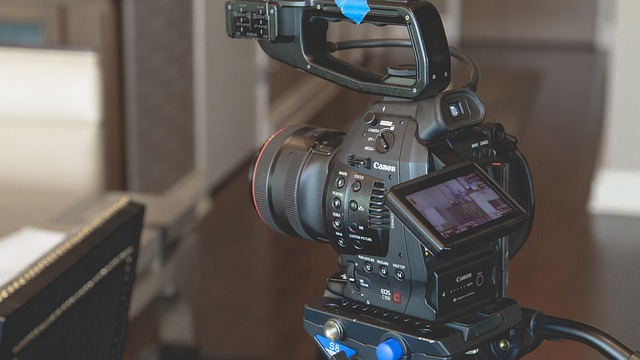Converting DivX to MOV format offers numerous benefits for video content creators and consumers. DivX, known for efficient compression, is ideal for streaming and online sharing, while MOV (QuickTime) handles diverse multimedia content and ensures broad device compatibility. Advanced conversion tools preserve high-quality video and audio through optimized encoding processes, supporting multiple projects efficiently. This enables seamless playback, enhanced features like improved synchronization, and cross-platform compatibility, enhancing the overall multimedia experience. Key steps include identifying essential frames, applying motion compensation algorithms, and packaging data into MOV containers, catering to industries from media production to streaming services and backup solutions.
Looking for a seamless way to convert DivX to MOV? Discover the ultimate tool for efficient video encoding and decoding. This article explores the popular DivX and MOV formats, highlighting the advantages of our powerful conversion tool. We delve into the streamlined encoding process, ensuring quality retention, and showcase real-world applications. Learn how converting DivX to MOV can simplify your media management, offering a fast, reliable, and high-quality solution for all your video needs.
Understanding DivX and MOV Formats

DivX and MOV are two popular video formats, each with its unique strengths. DivX is a versatile codec known for efficient compression, making it ideal for encoding videos that maintain high quality while significantly reducing file sizes. This feature makes DivX perfect for streaming and online sharing, where minimizing data without compromising visual experience is crucial. On the other hand, MOV (or QuickTime) is Apple’s native video format, renowned for its ability to handle various multimedia content, including audio, video, and even graphics. MOV files are widely supported across different devices and platforms, making them a preferred choice for professional video production and editing.
Converting DivX to MOV can be beneficial in several scenarios. For instance, if you have an old library of DivX videos and want to ensure compatibility with modern devices or editing software that exclusively supports MOV, conversion is essential. This process also allows users to take advantage of MOV’s advanced features, such as better synchronization and support for multiple audio tracks, enhancing the overall multimedia experience.
Advantages of Using Convert DivX to MOV Tool

Converting DivX to MOV format offers a range of advantages for video enthusiasts and professionals alike. One of the key benefits is the preservation of high-quality video and audio during the conversion process, ensuring that your content remains intact and vibrant. The DivX codec, known for its efficient compression, is seamlessly integrated into the conversion tool, allowing for smaller file sizes without sacrificing visual clarity.
Additionally, the Convert DivX to MOV tool streamlines the encoding and decoding process, making it perfect for those who handle numerous video projects. Its user-friendly interface enables quick and easy conversions, saving time and effort. This efficiency is particularly valuable in today’s fast-paced media industry where prompt content delivery is essential.
Efficient Video Encoding Process

The efficient video encoding process involves several key steps designed to optimize both quality and file size. Initially, the raw video feed is analyzed to identify and capture essential frames, ensuring a balanced trade-off between visual fidelity and data compression. Advanced algorithms then compress these frames using innovative techniques like motion compensation, where similarities between consecutive frames are exploited to reduce redundancy. This method, similar to how DivX codecs work, results in smaller file sizes without significant quality loss.
Subsequent to compression, the encoded data is packaged into a suitable container format, such as MOV (QuickTime), which facilitates seamless playback and supports various multimedia features. This step ensures that the video can be easily accessed and played back on a wide range of devices and platforms, making it ideal for streaming or archival purposes, including the conversion of DivX to MOV files.
Preserving Quality During Conversion

When converting videos from one format to another, such as converting DivX to MOV, it’s crucial to prioritize preserving video quality throughout the process. The original file’s resolution, color depth, and frame rate play a significant role in determining the output quality. Advanced conversion tools utilize sophisticated algorithms to maintain these parameters, ensuring the transformed video resembles the original as closely as possible.
These tools often offer settings that allow users to balance between file size and quality. Adjusting these settings can help optimize the converted MOV file for different purposes, whether it’s for streaming, editing, or storing on specific devices. By carefully managing these options, you can avoid noticeable declines in video integrity during the conversion process.
Real-World Applications and Use Cases

In real-world applications, efficient video encoding and decoding are essential for various industries. For instance, media production companies often need to convert DivX files to MOV format for seamless integration into post-production workflows, ensuring smooth editing and distribution processes. This is particularly crucial in today’s digital era where high-quality video content is increasingly demanded across multiple platforms.
Additionally, streaming services rely on optimized encoding to deliver videos without buffering or lag, enhancing the user experience. The ability to efficiently convert and transcode videos also plays a significant role in backup solutions, archival systems, and digital rights management. Use cases span from personal users sharing home videos to large-scale video distribution platforms, all requiring reliable and fast video encoding and decoding technologies.
The ability to seamlessly convert DivX to MOV offers a streamlined solution for efficient video management. This article has highlighted the importance of such tools, especially in preserving quality and facilitating various real-world applications. By understanding these formats and leveraging specialized conversion tools, users can easily navigate between different video requirements, ensuring optimal playback and storage solutions with minimal effort. Converting DivX to MOV is now a straightforward process, catering to both technical enthusiasts and everyday users alike.
